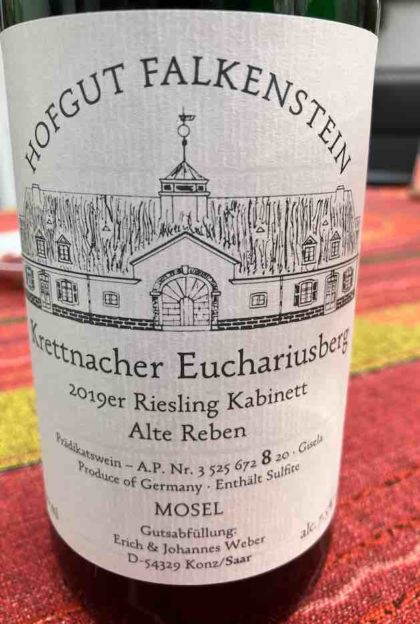
Riesling plays a very important role in German sweet wine. For me, Riesling Auslese wines from the Mosel region are definitely among the best. This time, we tasted the Riesling Auslese Pündericher Marienburg Fahrlay 2017 from the Clemens Busch winery. The Busch winery in Pünderich on the Mosel, represented by Rita and Clemens Busch and their son Johannes, cultivates around 20 hectares of vineyards. Most of these belong to the Grand Cru Marienburg, with a smaller portion belonging to the neighbouring Premier Cru Nonnengarten. Riesling is the dominant variety, accounting for 99% of the vineyard.

 The Friulian DOC Colli orientale, like the DOC Collio, only came into focus in the 1970s, when both entered the wine market with large quantities of cool-fermented, fresh, fruity and aromatic white wines. This was mainly because the wines were made from internationally known varieties, especially Pinot Grigio, Chardonnay and Sauvignon Blanc. In the 1980s, international red wine varieties such as Merlot, Cabernet Sauvignon, Cabernet Franc and Pinot Noir were increasingly planted in order to better position themselves internationally in the red wine sector.
The Friulian DOC Colli orientale, like the DOC Collio, only came into focus in the 1970s, when both entered the wine market with large quantities of cool-fermented, fresh, fruity and aromatic white wines. This was mainly because the wines were made from internationally known varieties, especially Pinot Grigio, Chardonnay and Sauvignon Blanc. In the 1980s, international red wine varieties such as Merlot, Cabernet Sauvignon, Cabernet Franc and Pinot Noir were increasingly planted in order to better position themselves internationally in the red wine sector.





 Markus Molitor shows how the consistent implementation of quality standards can become a story of success. Since taking over his father’s winery in 1984, he has constantly expanded it, as he has consistently pursued the goal he formulated of building on the golden days of Riesling from the Mosel with wines that are extremely typical of the location and can be stored.
Markus Molitor shows how the consistent implementation of quality standards can become a story of success. Since taking over his father’s winery in 1984, he has constantly expanded it, as he has consistently pursued the goal he formulated of building on the golden days of Riesling from the Mosel with wines that are extremely typical of the location and can be stored.